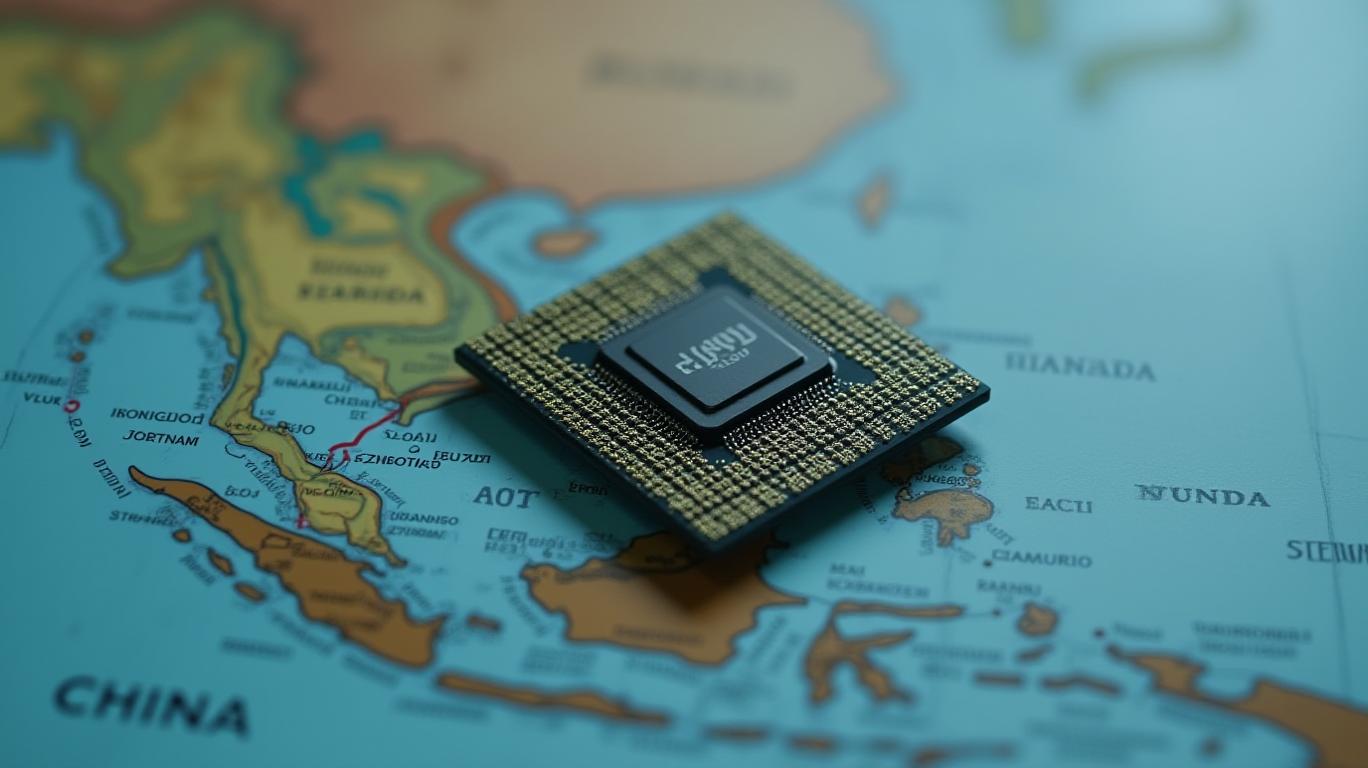Nvidia's AI Chip Dilemma: Navigating U.S. Regulations and Smuggling Risks in China
The U.S. government’s crackdown on exports of advanced AI chips to China has thrust
(NASDAQ: NVDA) into the center of a geopolitical and regulatory storm. As Washington tightens controls to curb China’s access to cutting-edge technology, the semiconductor giant faces financial headwinds, operational complexities, and the urgent need to innovate around restrictions. This article examines the implications of these policies for investors, analyzing risks and opportunities in one of the most critical battlegrounds of the AI era.
The Regulatory Tightening: A Three-Tier System
In early 2025, the Biden administration introduced a three-tier export control system for advanced AI chips. Tier 1 nations (like China and Russia) face outright bans, while Tier 2 countries receive limited quotas, and Tier 3 allies enjoy unrestricted access. The move targets Nvidia’s H100 and H200 chips, which are pivotal for training large language models (LLMs) and high-performance computing. However, enforcement challenges have emerged as smuggling networks exploit loopholes.
Smuggling: A Persistent Threat
Despite the restrictions, Chinese firms are circumventing bans through clandestine networks. Smugglers route chips via intermediaries in Malaysia, Hong Kong, and Japan, while human couriers reportedly smuggle chips in luggage for $100 per unit. A University of California, Berkeley study estimates up to 12,500 H100 chips could enter China annually through such methods. Chinese companies like Sugon and Inspur have also created shell entities to bypass restrictions, though these subsidiaries were later added to the U.S. Entity List.
Meanwhile, Chinese firms are leveraging cloud services like Amazon Web Services and Microsoft Azure to access banned chips indirectly. The Biden administration proposed rules to close this loophole under its AI diffusion framework, but as of early 2025, these measures remain unimplemented.
Financial Fallout and Strategic Adjustments
Nvidia has already felt the pinch. In early 2025, the company reported a $5.5 billion charge tied to export controls on H200 chips to China and restricted regions. This drove a 9% drop in its stock price. To mitigate losses, Nvidia is redesigning its chips to comply with U.S. rules, including a China-specific version of its Blackwell chip (B20), expected to sample by mid-2025.
Political Crosscurrents
The regulatory landscape is further complicated by U.S. domestic politics. Representative Bill Foster (D-Illinois) is pushing bipartisan legislation to mandate embedded tracking tools in chips, while AI startup Anthropic advocates stricter enforcement, citing alleged smuggling tactics like hiding chips in “prosthetic baby bumps.” Conversely, Nvidia CEO Jensen Huang argues that overly restrictive policies risk stifling global AI innovation, emphasizing that China’s tech ecosystem—already home to firms like Huawei and DeepSeek—is advancing rapidly.
Geopolitical Stakes
The U.S. aims to leverage its semiconductor dominance to slow China’s AI progress, anticipating a “computing efficiency gap” by 2027. However, China’s $1.4 trillion AI investment plan and subsidies for domestic chipmakers (e.g., Huawei’s Ascend series) suggest it will persist in closing this gap. The Trump administration’s potential shift to bilateral negotiations over the three-tier system could further complicate the regulatory environment, with the UAE—a key regional ally—lobbying for eased restrictions to support its $1.5 billion partnership with Microsoft.
Investor Implications
- Risks:
- Revenue Volatility: China accounts for ~22% of Nvidia’s revenue, per its Q3 FY2025 report. Smuggling and regulatory uncertainty could prolong this drag.
- Compliance Costs: Redesigning chips and auditing clients in Southeast Asia will strain margins.
Geopolitical Uncertainty: U.S. policy shifts (e.g., Trump’s proposed licensing regime) add unpredictability.
Opportunities:
- Compliance-Driven Innovation: The B20 and other China-specific chips could capture market share from slower-moving competitors.
- Global AI Growth: The AI market is projected to reach $1.5 trillion by 2030, with Nvidia’s ecosystem advantages (CUDA, Omniverse) retaining dominance despite headwinds.
- U.S. Defense Contracts: Washington’s push for domestic AI infrastructure could boost demand for U.S.-compliant chips.
Conclusion: Navigating the AI Arms Race
Nvidia’s challenges are steep, but its position as the AI chip leader remains unmatched. While smuggling and regulations threaten near-term profits, the company’s ability to adapt—through compliance-friendly designs and geopolitical lobbying—could sustain its long-term dominance. Investors should weigh these risks against the secular AI boom.
Key data points underscore this balance:
- Market Opportunity: The global AI chip market is expected to grow at a 30% CAGR, reaching $120 billion by 2027.
- Nvidia’s Edge: Its Blackwell chip series, with 5x the performance of 2022 models, retains a 2–3 year lead over Chinese competitors.
- Smuggling Mitigation: Proposed measures (chip registries, $57M BIS funding) could reduce smuggling to “tens or hundreds of chips/year” by 放2026.
For now, Nvidia’s stock (NVDA) trades at a P/E ratio of 42x—high but justified by its AI leadership. Investors should monitor regulatory developments and chip redesign progress. The AI arms race is far from over, and Nvidia’s ability to navigate this storm will determine its trajectory in the decade ahead.

Comments
No comments yet